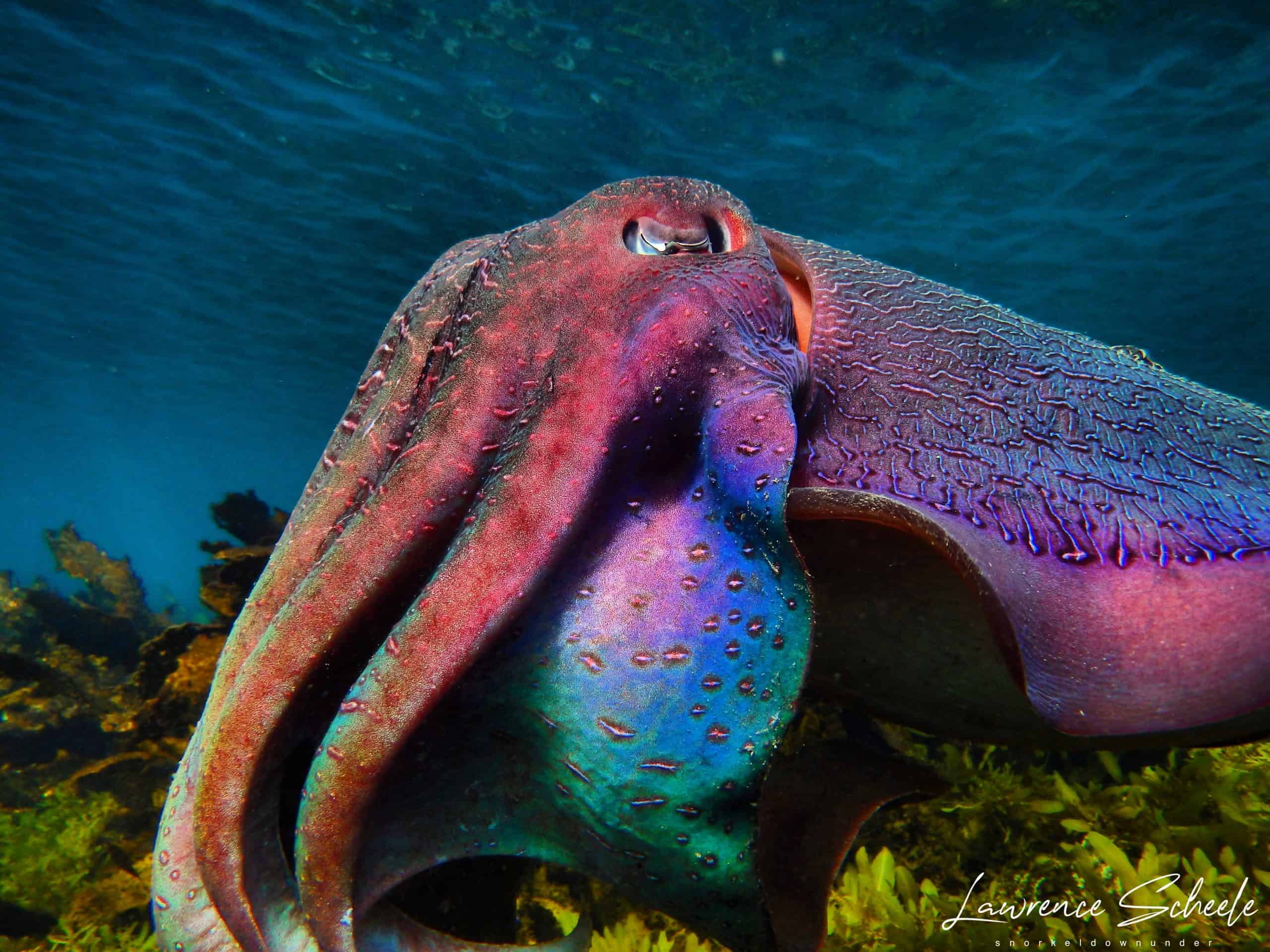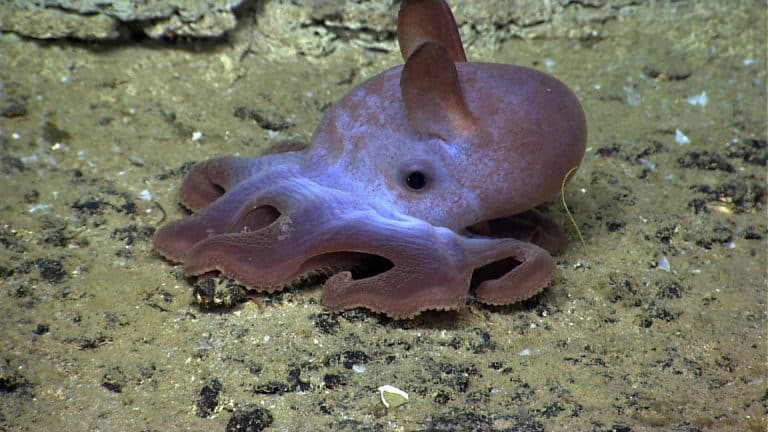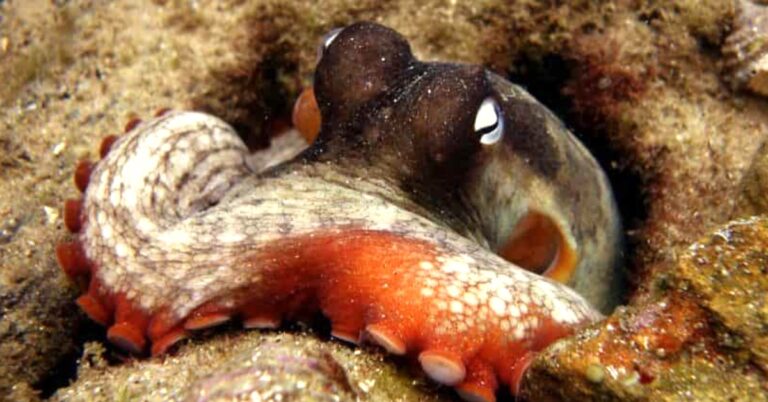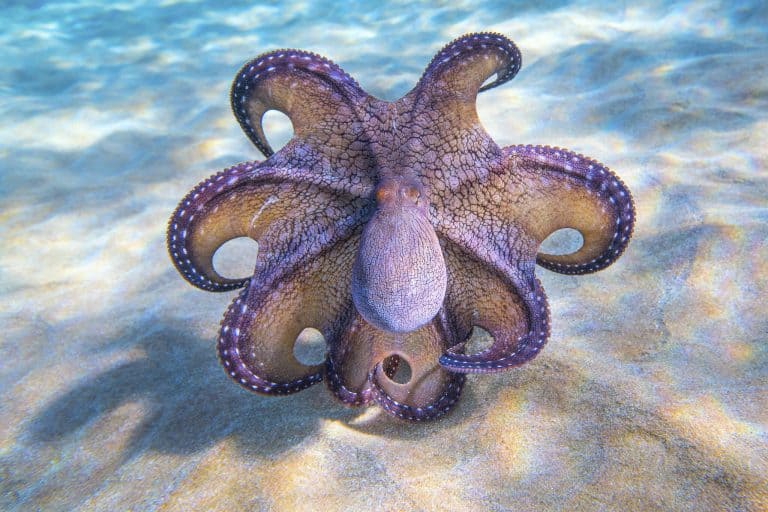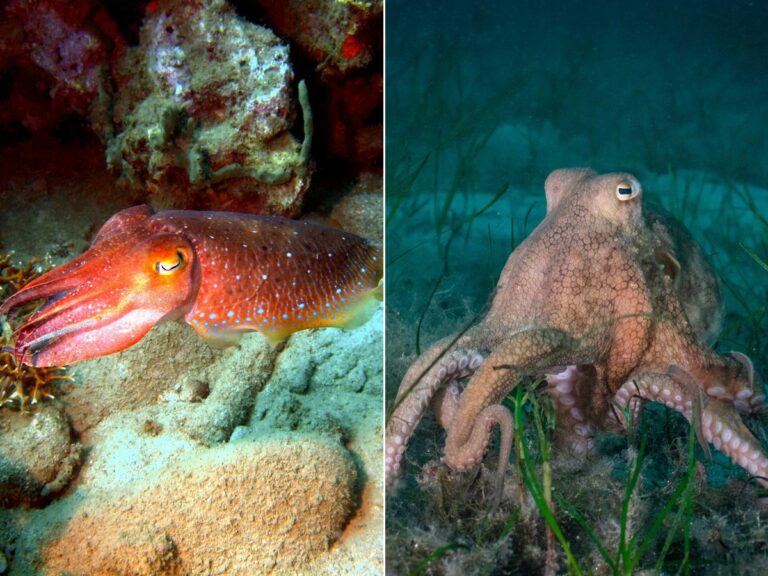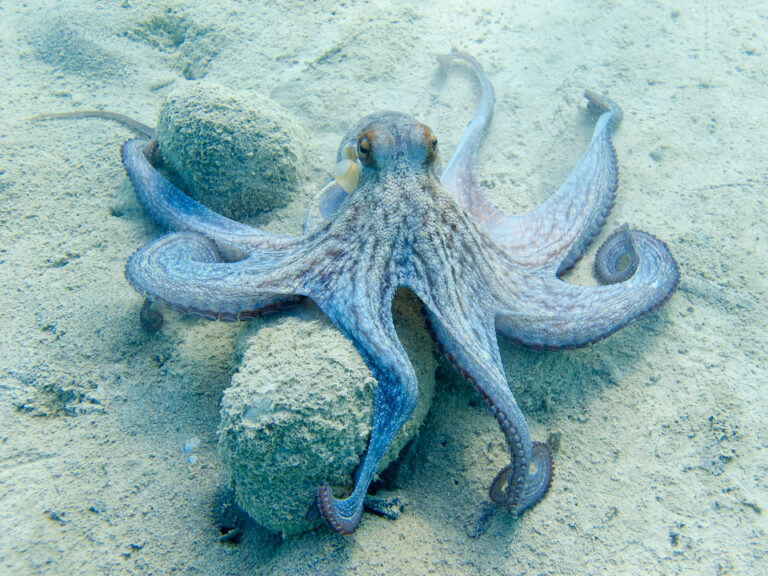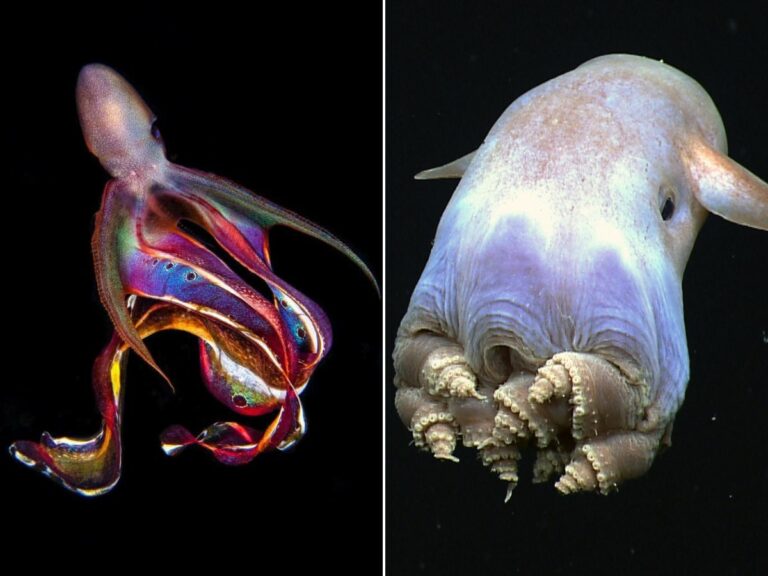Giant Australian Cuttlefish Facts That Will Make You Go WHOA!
Out of roughly 120 species of Cuttlefish in the world, the one from down under is the biggest of them all. The Giant Australian Cuttlefish, Sepia apama, lives fast and dies young, leading an extraordinary life during its short 1 to 2-year lifespan. These remarkable creatures have skin with a higher resolution than an iPhone X, panoramic vision, and more than a few sly mating habits! With 3 hearts and blue blood, this Cuttlefish is one intriguing reef resident- and here are a few more facts you should know!
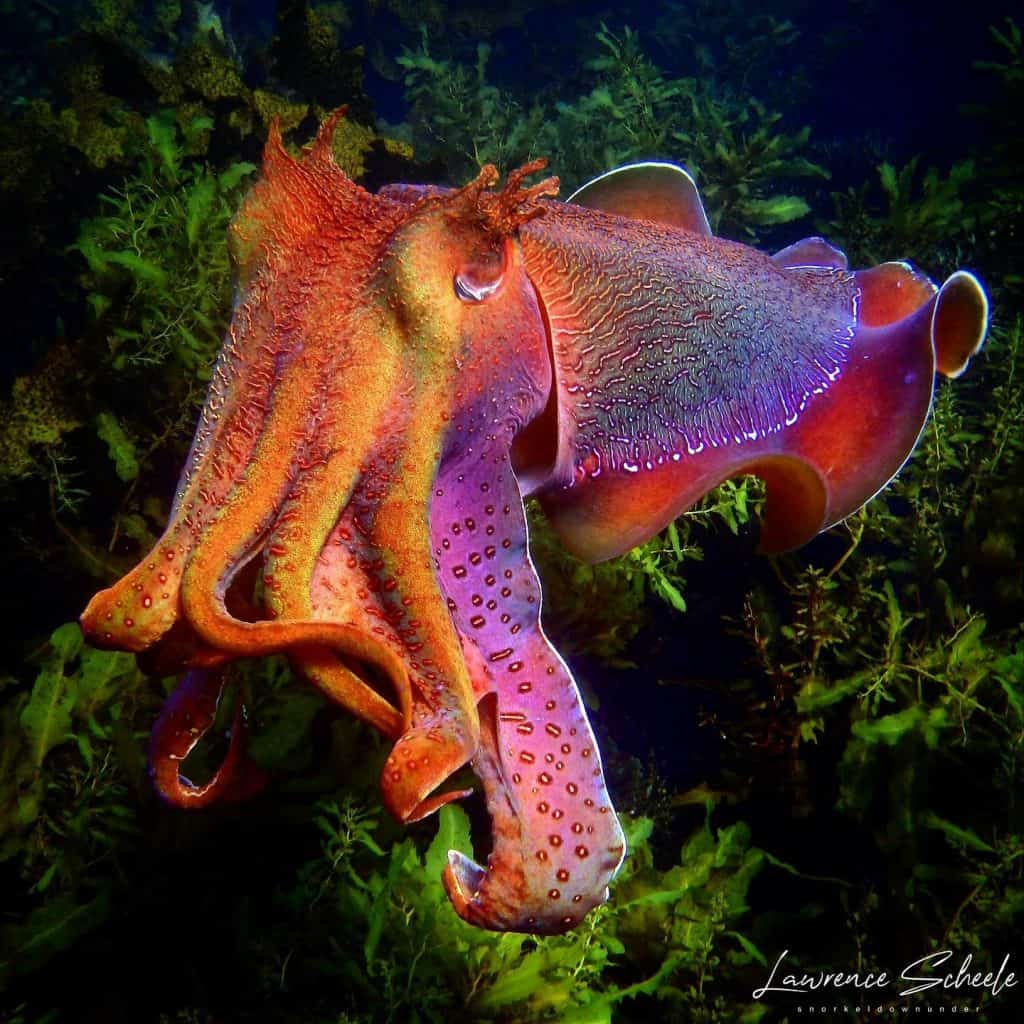
Where To Find Giant Cuttlefish In The Sea
The Giant Australian Cuttlefish calls the southern waters of Australia home. They can be found in the shallow reefs along the coast. Cuttlefish can weigh as much as 3 gallons of water (10.5kg or ~23 pounds)and can reach up to 1 meter (~ 3 feet) in length.
However, the majority are smaller than this measuring around 1 foot!
Cuttlefish have 8 arms and two feeding tentacles to capture:
- Fishes
- Crabs
- And, other crustaceans
They can blast out these tentacles faster than humans blink and then retract them into sockets beside each eye.
W-shaped pupils allow Cuttlefish a wider horizontal range, granting them panoramic views of their habitat. You can’t sneak up on a cuttlefish who doesn’t have a blind spot… but they sure can sneak up on you!
Mind Blowing Facts About The Giant Australian Cuttlefish!
With so many of you asking us questions about these giant colorful Cuttlefish on our Facebook and Instagram posts, we wanted to share some more fun facts about this beautiful species.
Shell no!
The Giant Australian Cuttlefish is no fish at all and belongs to a highly diverse group known as mollusks, which are generally associated with invertebrates that have shells.
However, the Giant Australian Cuttlefish – along with other cephalopods – are clearly squishy and shell-less. This occurred about 300-450 million years ago, when a group of cephalopods decided their shells were keeping them from living their best lives. So, they ditched them completely or internalized their shell.
Modern-day Cuttlefish have a cuttlebone within their mantle, which is the only leftover piece of their former shell. Interestingly, cuttlebones have made their way on land and are a common sight in birdcages, used as a calcium-rich dietary supplement.
Getting rid of their shell is all well and good until they realized they just threw away some particularly useful body armor. What was a cephalopod to do?
Devise an even better defense: color-changing skin.
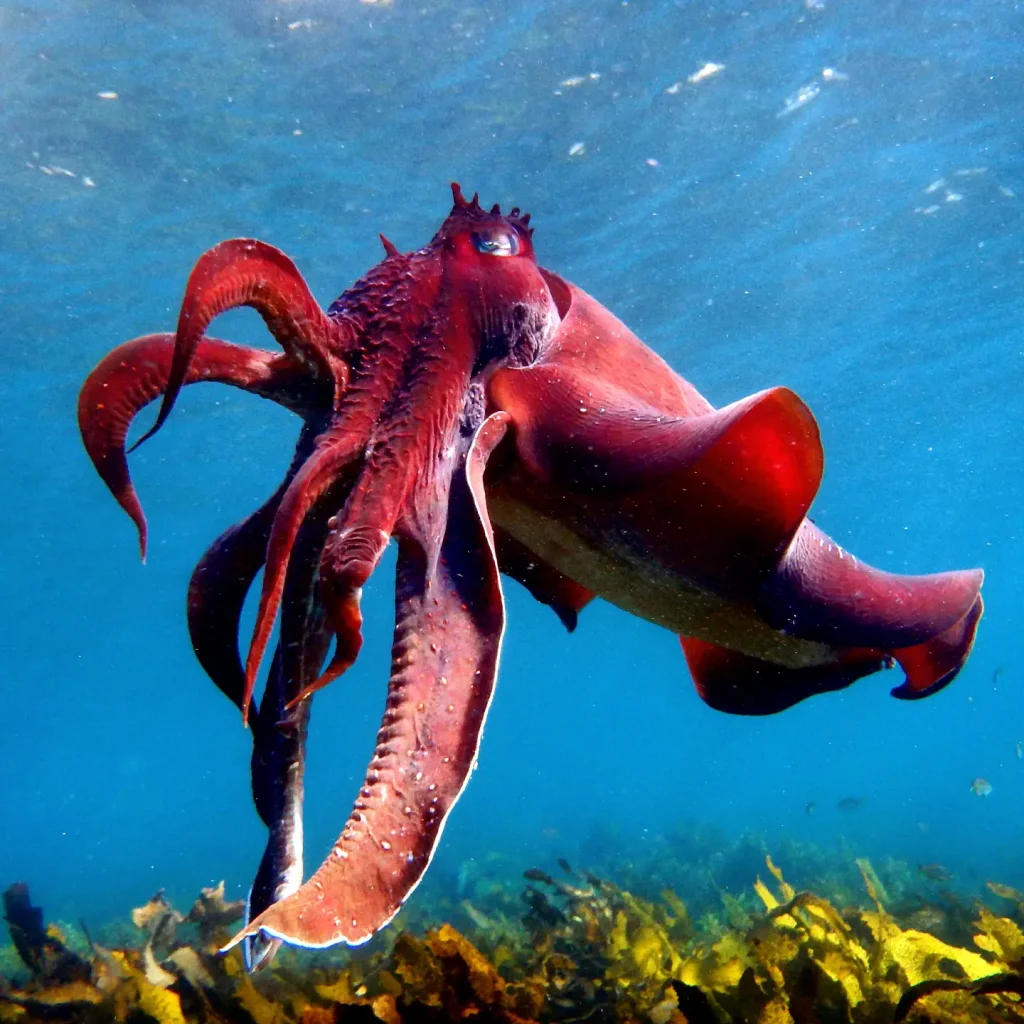
Captivating displays of color
Like many cephalopods, the Giant Australian Cuttlefish can change the color of its skin via tiny pigment-containing and light-reflecting cells called chromatophores, iridophores, and lecuophores.
What is a chromatophore?
A chromatophore is a stretchy sac filled with pigment controlled by mini muscles that can contract or relax.
When muscles contract, the sac widens and the color is exposed versus a relaxed chromatophore, which shrinks and hardly shows more than a small dot of color if any color at all.
Chromatophores produce colors such as:
- Orange
- Yellow
- Red
- Brown
- Black
Patches of these little cells are connected by nerves that can change in a split second.
🐙 Octopus Fun Fact
The Giant Australian Cuttlefish have more chromatophores per square inch of their skin than any squid or octopus. This makes them the cephalopods with the highest definition on the reef.
What are iridophores?
Underneath the Cuttlefish’s chromatophore skin lies another thin layer of color-changing cells called iridophores, which reflect light at different wavelengths resulting in blues, greens, silvers, and pinks.
What is a lecuophore?
Lastly, we have the lecuophores, which are also light-reflecting cells. However, they scatter light so that it appears white. This can provide the Cuttlefish with a blank backdrop, helping to increase the intensity of its chromatophores.
So…what’s the point?
Why have all this pizzazz? For communication and camouflage.
Being able to imitate rocks, sand, or seaweed from one second to the next makes it challenging for predators to track and find the Cuttlefish. Floating around the water column looking like a mesmerizing UFO can also help hypnotize prey.
Ultimately, flashy color displays can be used to communicate with fellow Cuttlefish, and this becomes ever so important during the mating season.
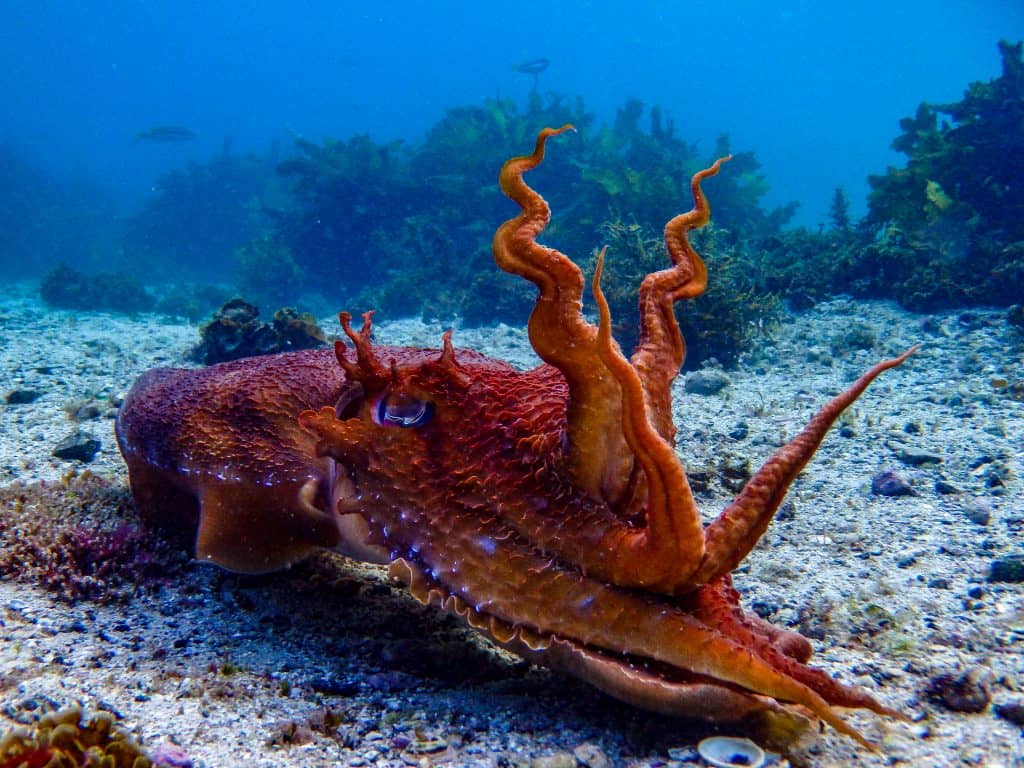
The event of the year – Mating!!
Notoriously lazy, Cuttlefish spend 95% of their time resting. Because of their short lifespan, they put all their energy into growing and getting ready for the biggest and most important event of their life: mating!
Cuttlefish are semelparous animals, which means they only reproduce once during their lifetime. So, they must get it right the first time.
When does the Giant Australian Cuttlefish mate?
Mating happens from May to August, during the winter months in the southern hemisphere. When the water temperatures start to dip (around 17℃, 62℉), thousands of Giant Australian Cuttlefish leave the comfort of their home reef and head towards a five-mile (8 km) stretch of the shallow reef in Spencer Gulf, Australia.
They get right down to business with males outnumbering females around 7:1, getting as high as 11:1 early in the mating season. At the height of the mating season, densities of Cuttlefish can get up to one per square meter (3 feet).
How does the male Cuttlefish know the female has chosen him?
Males face fierce competition when it comes to choosing a mate. Even with their best attempts to dazzle a female while simultaneously flashing warning colors at other interested males, they still get rejected about 70% of the time.
When a male finally gets that welcoming color pattern in return, mating happens head-to-head with tentacles and arms entwined. The male uses a specialized arm to pass his spermatophore, a small packet of sperm, to the female.
This process takes around 2 minutes! Then, the male will try and hide the female and ward off any other admirers. This improves the chances that the female will use their sperm to fertilize her eggs!
🐙 Octopus Fun Fact
Females are polyandrous, seeking out multiple partners to guarantee better genetic variability.
What happens to males that aren’t big or glitzy enough for the ladies?
Well, they have a plethora of tricks up their arm sleeve, including mimicking the color patterns of females. This allows the smaller male to get close enough for a potential spermatophore parcel to pass off without alerting a larger male in the vicinity.
Smaller males also meet potential mates under the cover of rocks and reefs where larger males are not able to fit!
What happens to the female Cuttlefish after they receive a spermatophore?
Similar to how octopuses lay eggs, after all the games have been played, females go off to lay their lemon-shaped eggs on the underside of rocks. Around 100 to 300 eggs are left with no one to guard or care for them. They hatch 3 to 5 months later.
Soon after mating and egg-laying, expending all their energy, and having made it to the peak of their short existence, the Giant Australian Cuttlefish’s life comes to an end and they perish.
This aggregated spawning affair is a unique sight to behold, drawing tourists from across the world. The Giant Australian Cuttlefish is so busy with the matters at hand that they seem unbothered by humans floating above them marveling at the spectacle happening below.
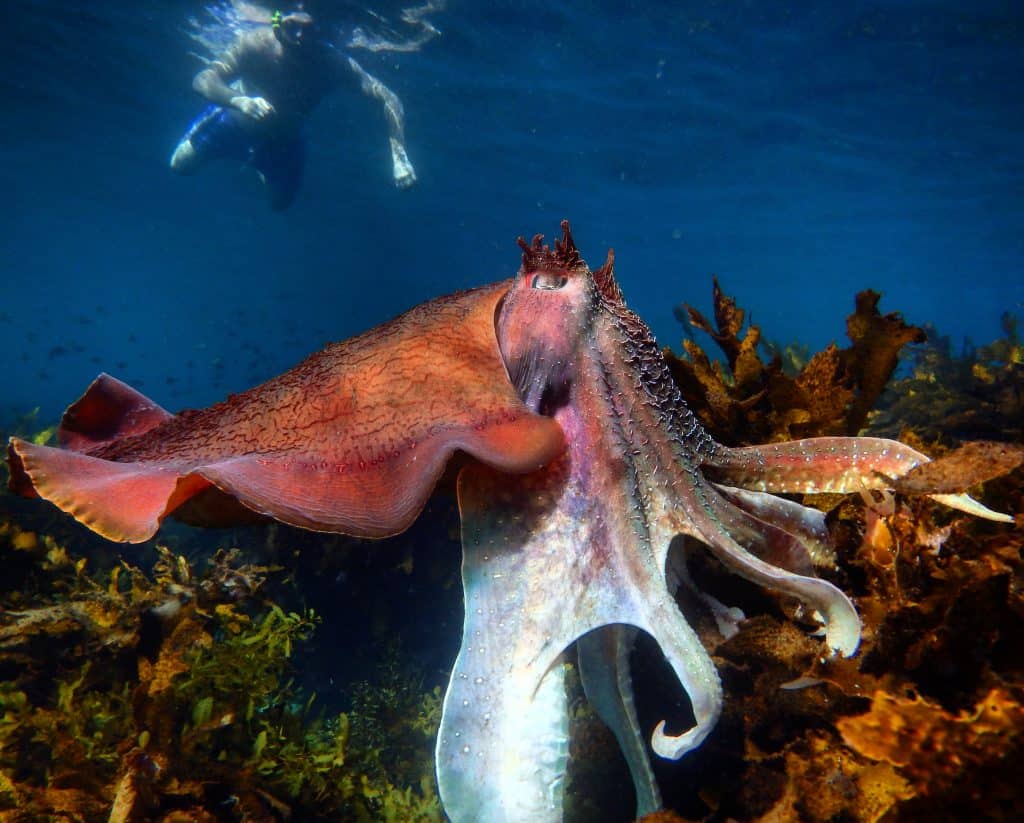
Giant Australian Cuttlefish Facts: Which One Fascinated You The Most?
Did you enjoy learning these Giant Australian Cuttlefish facts?
If you want to educate yourself some more about all sorts of different cephalopods, take a look at our encyclopedia. Or, what we call it, our Octopedia!
Connect with other octopus lovers via the OctoNation Facebook group, OctopusFanClub.com! Make sure to follow us on Facebook and Instagram to keep up to date with the conservation, education, and ongoing research of cephalopods.
More Posts To Read:
- Wunderpus vs. Mimic Octopus: Spot The Difference!
- What Is The World’s Biggest Octopus?
- What Do Octopus Eat?
- Vampire Squid Facts: Ancestors Of The Jurassic Seas!
- Top 5 Smallest, Teeniest, Tiniest, Octopus Species!
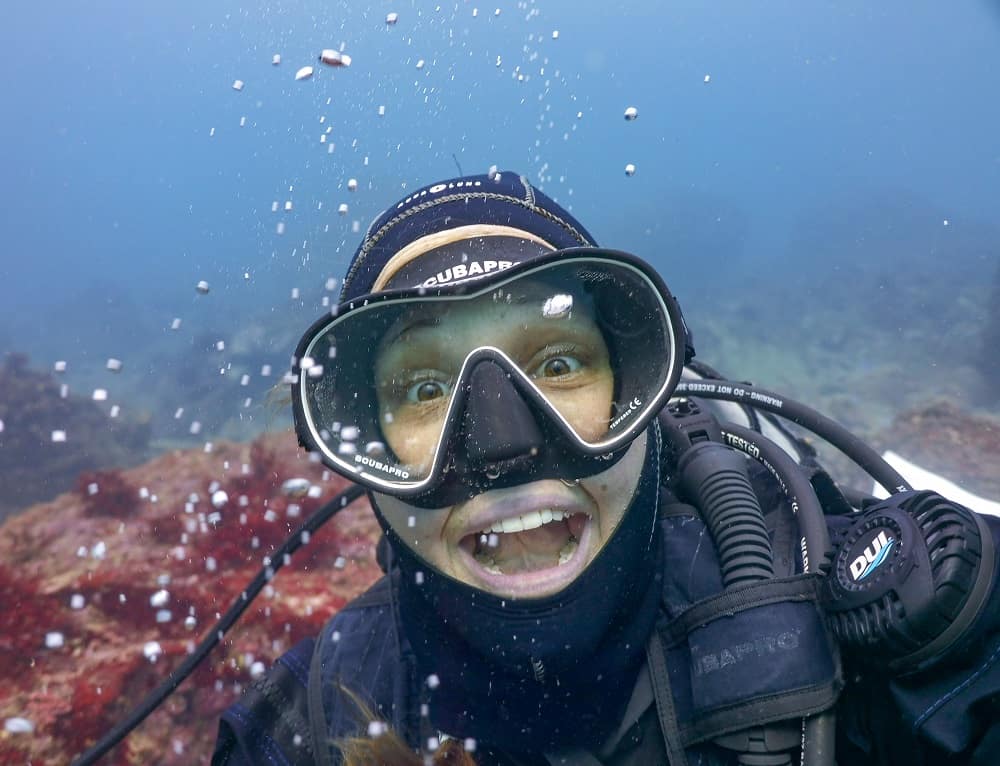
Corinne is a biologist with 10 years of experience in the fields of marine and wildlife biology. She has a Master’s degree in marine science from the University of Auckland and throughout her career has worked on multiple international marine conservation projects as an environmental consultant. She is an avid scuba diver, underwater photographer, and loves to share random facts about sea creatures with anyone who will listen. Based in Japan, Corinne currently works in medical research and scientific freelance writing!
